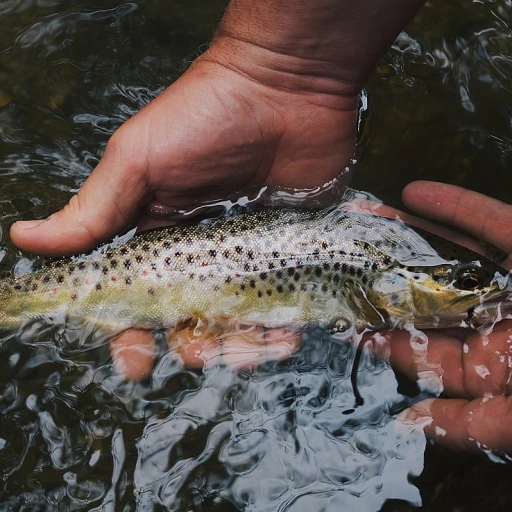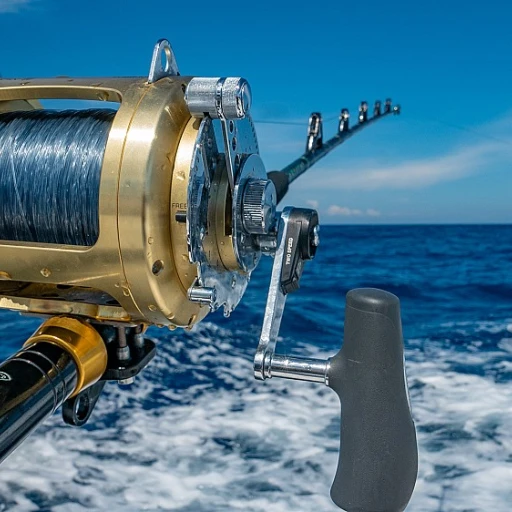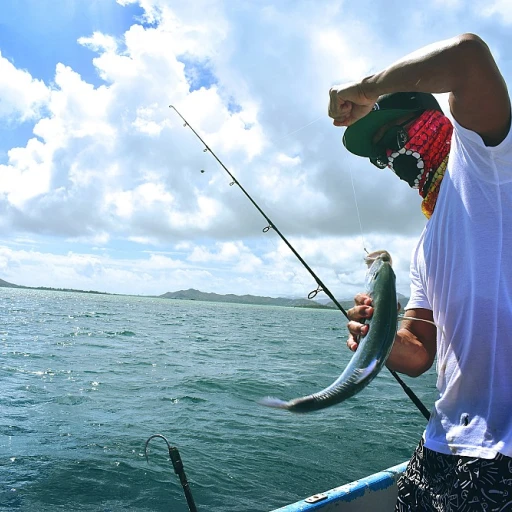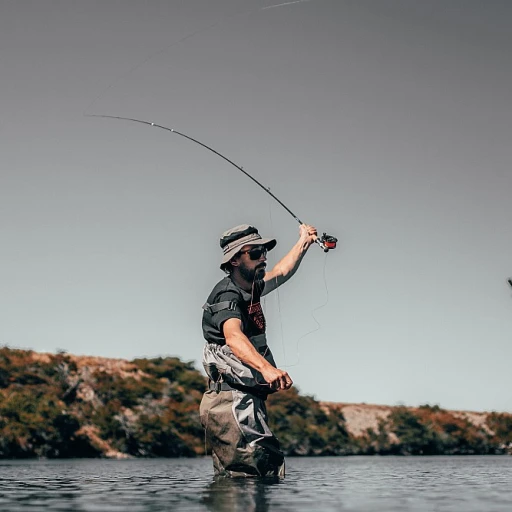
Understanding the different species of catfish
Delving into catfish varieties
Understanding how big catfish can get starts with knowing the different species swimming in our rivers, lakes, and reservoirs. From colossal wels catfish in Europe to the massive blue catfish in North America, each variety presents unique features and size potentials.Channel catfish: America's beloved catfish
The channel catfish, known by its scientific name Ictalurus punctatus, is one of the most common and popular catfish species in the United States. They typically grow up to 2 to 3 feet (0.6 to 0.9 meters) long, with record weights reaching up to 58 pounds. According to the International Game Fish Association (IGFA), the largest channel catfish ever caught weighed 58 pounds and was hooked in South Carolina's Santee-Cooper Reservoir in 1964.Blue catfish: the heavyweight champ
Blue catfish, or Ictalurus furcatus, often steal the spotlight among North American catfish due to their impressive size. They can grow over 5 feet long and weigh up to 150 pounds. One of the most well-known blue catfish was caught in Kerr Lake, Virginia, weighing an astonishing 143 pounds, according to the IGFA.The mysterious flathead catfish
Another giant of the catfish family is the flathead catfish, scientifically named Pylodictis olivaris. These behemoths lurk in North American rivers and lakes, growing up to 4 feet (1.2 meters) or more and weighing over 100 pounds. A record flathead catfish, weighing 123 pounds, was caught in Elk City Reservoir, Kansas.Wels catfish: Europe's freshwater monsters
The wels catfish, or Silurus glanis, is the giant of European freshwater species. Often referred to as a monster fish, it can reach lengths of over 10 feet (3 meters) and weigh several hundred pounds. The largest wels catfish on record was caught in Italy's Po River, weighing a staggering 297 pounds.Giant Mekong catfish: Asia's aquatic giant
The Mekong giant catfish, scientifically known as Pangasianodon gigas, is one of the largest freshwater fish in the world. Native to the Mekong River basin in Southeast Asia, it has been recorded to grow up to 10.5 feet (3.2 meters) long and weigh up to 646 pounds. Unfortunately, this species is critically endangered, with its numbers dwindling rapidly. By knowing the different size potentials of each species, anglers can set realistic expectations and dream big! To put these giants into perspective, you can compare them to other record-breaking catches like the largest tuna ever caught.Record-breaking catfish catches
Unbelievable feats: the biggest catfish ever caught
The world of catfish fishing is full of astonishing stories. Among the many species, certain record-breaking fish have left anglers in awe. Understanding these significant catches offers insight into truly how big do catfish get.
Notable world records
One of the most jaw-dropping catches was recorded in 2005 in Thailand. A fisherman captured a Mekong giant catfish weighing an incredible 646 pounds [Source: BBC]. This catch is still hailed as one of the biggest freshwater fish ever caught, and it stands as a testament to the sheer size and power of this species. The Mekong giant catfish is listed as critically endangered on the IUCN Red List, highlighting both its impressive stature and its precarious future.
Blue catfish champions
In North America, the blue catfish holds a significant record. In 2011, Richard Nicholas Anderson captured an astounding blue catfish weighing 143 pounds at Kerr Lake, Virginia. This feat is recognized by the International Game Fish Association (IGFA) as the largest blue catfish officially recorded [Source: Virginia Game and Inland Fisheries].
Wels catfish wonders
Europe's wels catfish (Silurus glanis) is another gigantic species that's often the target of dedicated fishermen. In 2019, a major catch in the River Po, Italy, saw a fisherman pulling in a wels catfish measuring over 9 feet long and weighing 297 pounds [Source: La Repubblica]. Such catches continue to draw anglers to European waters with the hopes of seeing, and maybe even catching, one of these titans.
Flathead catfish giants
The flathead catfish (Pylodictis olivaris) is equally impressive, although not as massive as some other species. An Ohio fisherman took the title with a 123-pound flathead caught in Elk City Reservoir, Kansas in 1998 [Source: Outdoor Oklahoma]. This impressive catch highlights how widespread and varied the largest catfish catches are.
Mystique and legends
There's also a mystical appeal to giant catfish. Legends and unverified records abound, with tales of enormous catfish lurking in hidden stretches of rivers, lakes, and reservoirs. While such stories often don't have the same verification as documented catches, they inspire a sense of adventure and awe among fishing enthusiasts.
These remarkable catches illustrate not just the potential size of catfish, but the excitement and dedication of the fishing community. Whether you're aiming to break a record or just love a good fishing tale, the stories of giant catfish are both thrilling and inspiring.
The giant Mekong catfish
Unveiling the behemoth of Southeast Asia
If you've ever wondered just how big do catfish get, the giant Mekong catfish might just blow your mind. Found in the Mekong River basin, specifically in countries like Thailand, Laos, and Cambodia, this catfish species defies expectations every time one is caught.
Known scientifically as Pangasianodon gigas, the Mekong giant catfish is listed as Critically Endangered on the IUCN Red List of Threatened Species. They are among the largest freshwater fish in the world. This catfish can weigh as much as 646 pounds (293 kg) and reach up to 10.5 feet (3.2 meters) in length. One of the most notable catches was in 2005, in northern Thailand, where a giant Mekong catfish weighing 646 pounds was captured. It’s dubbed one of the largest fish caught in the Mekong River.
Factors driving their monstrous growth
The river and associated floodplains create a uniquely fertile environment, with abundant food sources contributing to the Mekong giant's size. Unfortunately, overfishing and dam construction in the Mekong River basin have significantly threatened this species' population. They mostly thrive in the diverse yet delicate ecosystems provided by the river's muddy waters, where plant matter and small aquatic animals supply an endless buffet for these hungry giants.
Scientific and local perspectives
A famous quote from Dr. Zeb Hogan, an aquatic ecologist, can shed light on just how extraordinary these creatures are: "The Mekong giant catfish is a living relic, a true giant that has lived in the river for millions of years. Their size and endurance speak volumes about the health and history of the Mekong itself." Villagers who call the Mekong River home share stories of these elusive giants, further embedding catfish in the local culture and livelihood.
For anglers, the quest to catch a Mekong giant catfish can be compared to chasing legends. As rare as these fish have become, when one is caught, it’s not just a triumph in fishing but a nod to the profound biodiversity of our waters.
Wels catfish: Europe’s freshwater giant
Europe's leviathan: the mighty wels catfish
When it comes to freshwater giants, few fish can compare to the wels catfish (Silurus glanis). Found mainly in central and eastern Europe, the wels has gained a formidable reputation thanks to its astonishing size and weight. A true heavyweight in the aquatic world, it regularly captures the imagination of anglers and researchers alike.
The wels catfish can grow to remarkable lengths, often exceeding 6.5 feet (2 meters). In some cases, exceptional individuals have even been known to surpass 9.8 feet (3 meters) in length. The weight is equally impressive, with the heaviest confirmed specimen weighing as much as 297 pounds (135 kilograms).
Habitat and distribution
The Silurus glanis mainly inhabits large river basins such as the Danube, the Rhine, and the Volga. It's also found in various lakes, reservoirs, and other still waters across Europe. Factors such as water temperature and food availability heavily influence their distribution and growth, with warmer waters generally supporting larger specimens.
Record catches and notable feats
Among the many records held by the wels catfish, the most famous one was caught in Italy's Po River. This behemoth measured an astounding 8.2 feet (2.5 meters) and weighed 298 pounds (135 kilograms). Such spectacles have cemented the wels' status in angling lore.
Another noteworthy event was recorded in Spain's River Ebro, where numerous large wels have been caught, further pushing the boundaries of what many believe is possible for freshwater fish size.
A controversial giant
Despite their grandeur, wels catfish often stir controversy among conservationists and ecologists. The species' voracious appetite and dominance can disrupt local ecosystems, leading to declines in other fish populations. This has sparked debate about the balance between preserving natural habitats and supporting angling tourism, which greatly benefits local economies.
For more in-depth stories and expert insights into record-breaking catches, check out this article.
Blue catfish: North America's heavyweight
The size prowess of blue catfish
The blue catfish (Ictalurus furcatus) stands as North America's heavyweight champion in the freshwater fish arena. Known for their remarkable size and weight, these giants of the aquatic world can truly astonish anglers and biologists alike.
Record blue catfish: jaw-dropping figures
One of the most famous records was set in 2011 when Nick Anderson reeled in a monstrous blue catfish weighing 143 pounds from Virginia's Kerr Lake. This catch not only shattered previous records but also set a new benchmark for what anglers could hope to achieve in the future (source).
Sam Morrow had also landed another whopper of a blue catfish, tipping the scales at a staggering 130 pounds, from the John Kerr Reservoir. Measurement showed these giants reaching lengths of up to 5 feet (around 1.5 meters), demonstrating the immense potential of this species to reach extraordinary sizes.
Prime habitats for blue catfish
Blue catfish thrive predominantly in large rivers and reservoirs. They are often found in the Mississippi River, James River, and South Carolina's waters. Notably, the Chesapeake Bay has also become a flourishing habitat for blue catfish, making it a popular spot for anglers hoping to catch a big one. Their adaptability to various freshwater systems makes them a formidable species capable of growing to immense sizes.
Factors contributing to their size
Several factors influence the size of blue catfish, including age, availability of food, and genetics. With a lifespan extending beyond two decades in optimal conditions, these fish have plenty of time to bulk up. Moreover, their diet of fish, mussels, and crustaceans provides the vital nutrients necessary for their growth. Genetic factors also play a crucial role, determining the natural growth potential of individual fish.
The thrill of catching a blue catfish
For many anglers, the chance to catch a record-breaking blue catfish is the ultimate prize. Using robust tackle and techniques suited for large fish, such as heavy-duty rods and lines, along with bait like cut fish or live bait, can increase the chances of a successful catch. The thrill and challenge of reeling in such a mighty fish is a huge draw for both amateur and professional anglers.
Factors influencing catfish size
Environmental factors
Catfish size is largely determined by the environment they inhabit. In general, the larger the water body, the bigger the catfish. This is because bigger waters provide more food resources and space. Rivers like the Mississippi and reservoirs such as Elk City in Kansas are known for harboring some of the biggest specimens.
Water temperature and quality
Water temperature and quality also play a significant role. Warmer waters typically lead to faster growth rates. Quality of water is key too; nutrient-rich waters promote abundant plant and animal life, essential for catfish growth. For instance, the Amazon’s nutrient-rich waters support a variety of giant catfish species.
Diet and availability of food
Catfish are opportunistic feeders, gobbling anything from small fish, crustaceans to plant matter. The availability and abundance of food directly affect their growth. Blue catfish (Ictalurus furcatus) thrive in areas packed with their preferred prey, enabling some to reach record sizes of over 100 pounds.
Genetics
Genetics can't be overlooked. Some catfish are naturally predisposed to reaching larger sizes. The Mekong giant catfish (Pangasianodon gigas) holds the crown for its impressive length and weight, often topping the scales at 600 pounds or more due to its inherent genetic potential.
Fishing pressure
Interestingly, fishing pressure influences size too. Waters with heavy fishing activity may have smaller average sizes since larger fish are often targeted first. Conversely, regulated waters, where catch and release practices are promoted, might see more giant catfish encounters. Regulations and practices by organizations like the International Game Fish Association (IGFA) aid in maintaining healthy populations of these whiskered giants.
Conservation efforts
Conservation and sustainable fishing practices are slowly becoming the norm, focusing on preserving the longevity and size potential of catfish. Recognized organizations like the IUCN Red List and various national bodies emphasize the importance of habitat conservation. Sustainable fishing programs ensure future generations can witness the awe-inspiring size of these freshwater giants.Factors influencing catfish size are as varied as the species themselves. Understanding these elements not only enhances fishing strategies but also emphasizes the importance of conserving these fascinating creatures for the years to come.
Fishing for giant catfish
Gearing up: essential equipment and techniques
Fishing for giant catfish is not for the faint of heart. One of the keys to landing these behemoths is having the right gear. You’ll need a heavy-duty rod and reel, equipped to handle the immense weight and power of a catfish, which can weigh up to hundreds of pounds. Experts recommend a rod with a rating of at least 50 pounds, paired with a strong reel capable of holding several hundred yards of 50 to 80 pound braided line.
Choosing the right bait is crucial too. Many seasoned anglers swear by live bait, such as large shad, sunfish, or even eels. The scent and movement of live bait can be irresistible to big cats. When it comes to artificial lures, large swimbaits or spoon lures that mimic the appearance of prey fish are effective. Channel catfish (Ictalurus punctatus) are particularly drawn to stink baits.
Best locations to catch giant catfish
Finding the right spot is another secret to success, as certain bodies of water are known for producing giant catfish. The Blue Catfish (Ictalurus furcatus), for instance, is commonly found in large rivers and reservoirs across North America, particularly in places like the James River in Virginia or Kerr Lake. The Missouri and Mississippi Rivers are also known hotspots.
If you're targeting Wels Catfish (Silurus glanis), you’ll need to head to Europe. Spain and Italy, known for their record-breaking catches, are prime destinations. These giants flourish in the deep, slow-moving parts of rivers and large lakes.
The Mekong River in Southeast Asia is legendary for the Mekong Giant Catfish (Pangasianodon gigas). This freshwater giant holds the record for the largest catfish caught, weighing in at an incredible 646 pounds. However, catching this species requires a permit and often a knowledgeable guide.
Playing the waiting game: patience and perseverance
Catching a giant catfish is often about patience. These fish are cautious and can take a while to investigate your bait. It’s not uncommon to sit for hours without a bite. The key is to stay patient and be ready to strike when the opportunity arises.
Many anglers recommend night fishing, as catfish are nocturnal feeders. The cover of darkness can boost your chances of a successful catch. Be sure to have the right lighting equipment and safety gear, as fishing at night comes with its own set of challenges.
Stories from the pros
Reel in some inspiration from those who’ve conquered these giants. Tim Pruitt, who caught the record blue catfish in Illinois in 2005, weighing 124 pounds, shared that persistence and a strong line were critical to his success. Another angler, Carmel Church, famous for his 646-pound Mekong Giant Catfish catch in Thailand, emphasized the importance of local knowledge and respected guides.
Reading stories and learning from seasoned anglers can significantly improve your chances. Joining local fishing clubs can also be beneficial, as they provide invaluable resources, tales, and camaraderie. Explore how local fishing clubs enhance angler expertise to dive deeper.
Respecting the giants
As thrilling as it is to catch a giant catfish, it's also important to handle them with care. These fish play a crucial role in their ecosystems, and their populations need to be respected and protected. Many anglers practice catch and release, ensuring the fish are returned to the water safely.
By following these tips and drawing on both the wisdom of experienced anglers and thorough preparation, you too can have the experience of a lifetime fishing for giant catfish.
Conservation and the future of giant catfish
Pioneering conservation efforts
When considering catfish, conservation measures are vital as several species face threats from habitat loss and overfishing. One prominent effort is by the International Union for Conservation of Nature (IUCN), who places some catfish species like the Mekong giant catfish on their Red List of Threatened Species. This listing helps raise awareness and drive protective legislation.
Legislation and policies
Governments in Europe and the United States have implemented several policies to protect giant catfish. For instance, in Spain and Italy, regulations exist to maintain the habitat of the wels catfish (Silurus glanis). Similarly, in the United States, specific measures in states like South Carolina and Kansas aim to conserve the blue catfish (Ictalurus furcatus) population.
Catch and release programs
In addition to legislation, many anglers practice catch and release to help maintain catfish populations. This practice, advocated by organizations like the International Game Fish Association (IGFA), encourages sustainable fishing. For example, the record-breaking catfish caught in Kerr Lake, Virginia, was released back into the water to preserve its genetic potential.
Impact of conservation efforts
Conservation initiatives are showing promising results. Studies report that the population of the flathead catfish is stabilizing in regions like the James River. Furthermore, monitoring programs in the Chesapeake Bay aim to balance the ecosystem while supporting recreational fishing activities. These measures not only sustain fish populations but also bolster local fishing economies.
The way forward
Moving forward, it's crucial to enhance conservation strategies and promote responsible fishing practices. Continued research and awareness campaigns are integral to safeguarding giant catfish species for future generations. Whether you're an angler chasing the next big catch or a conservationist working to protect these fascinating creatures, every effort counts.



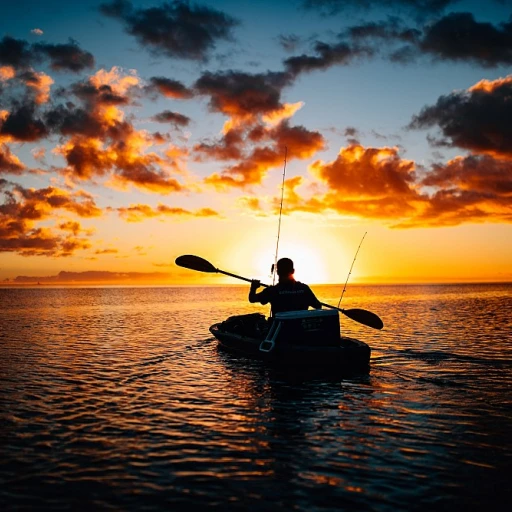
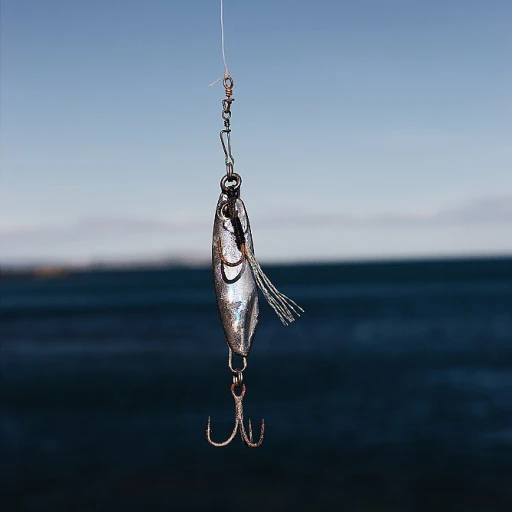
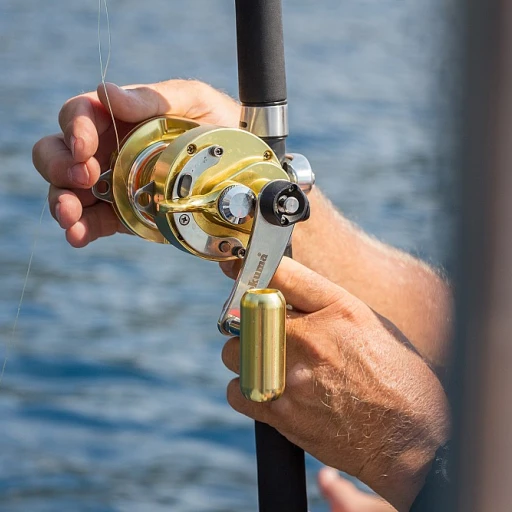
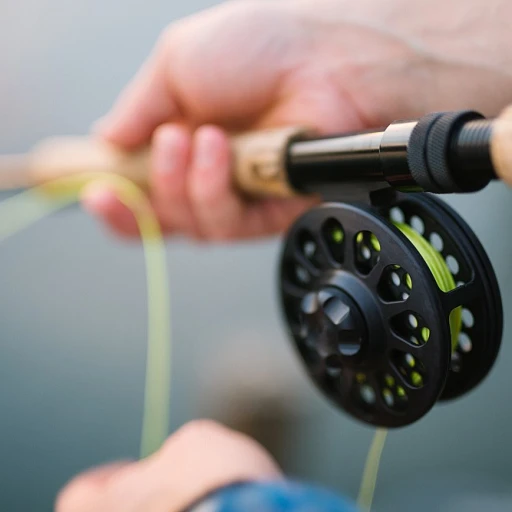
-large-teaser.webp)
